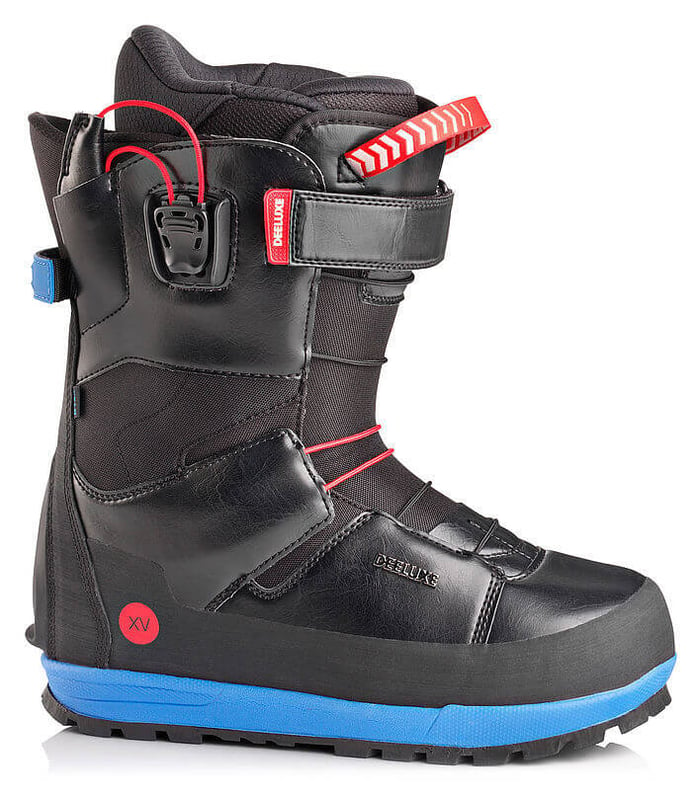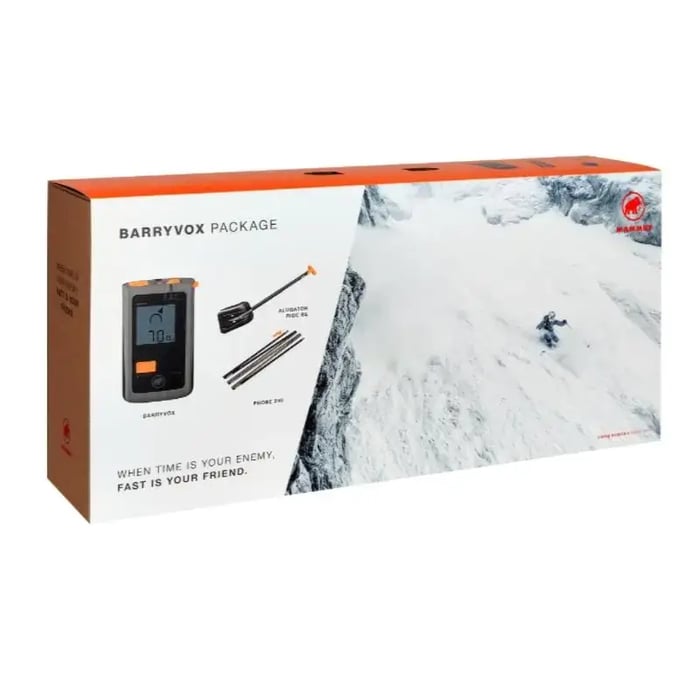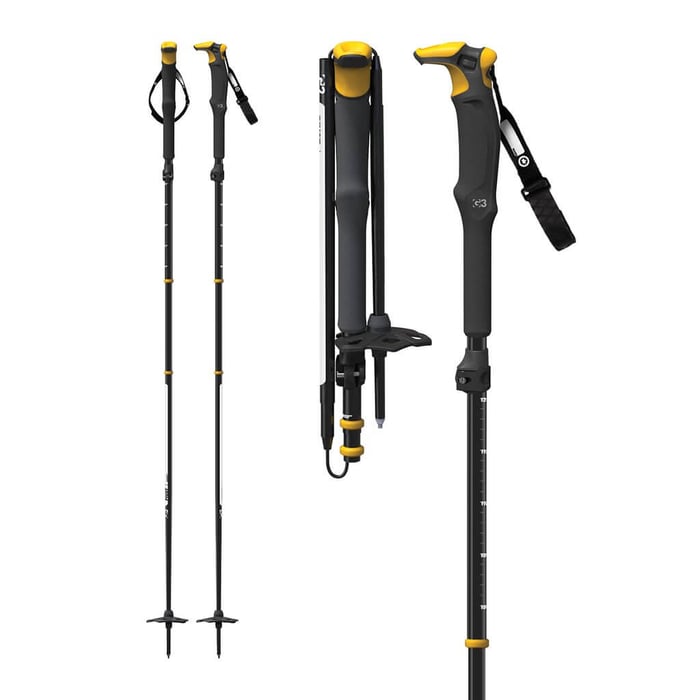This detailed splitboard boot features article is a supporting piece stemming from our “Do I Need Specific Boots for Splitboarding” blogpost. That article is a brief overview discussing the merits of making the investment in splitboarding boots vs riding in the backcountry with resort snowboard boots.
Below we have taken the time to elaborate on the key features we see as being ultra valuable in splitboard specific snowboard boots. For context, we're only covering what we would consider true splitboard boots. There are many crossover style boots (Deeluxe Areth Rin) which bridge the gap between resort and the backcountry.
Detailed Splitboard Boot Features
DETAILED SPLITBOARD BOOT FEATURES
REINFORCEMENT IN HIGH WEAR AREAS

Splitboarding puts specific strains on boots. The ride down is very similar to resort riding -- it is the uphill component that really tests the build of snowboard/ splitboard boots. Over the years of running AST courses, all-mountain riding, chatting with other splitboarders and customers, we've seen a repeatable trend for those wearing resort boots.
This trend is that within a season or two of regular backcountry riding, resort boots tend to wear excessively in a few key spots: the toe, the heel, the fabric on the outside of the boot, and where the boot joins the sole. This accelerated wear is almost exclusively due to repetitive rubbing while climbing. The more you ride and the longer the days, the quicker this wear occurs.
Splitboard specific boots combat this by reinforcing those areas with strategically placed rubber, leather or nylon. Manufacturers also add extra adhesive to the joints of the sole and the upper boot. This reinforcing adds some weight, however it critically ensures you have a boot that is long lasting and stays in one piece
SOLES DESIGNED FOR BACKCOUNTRY USE
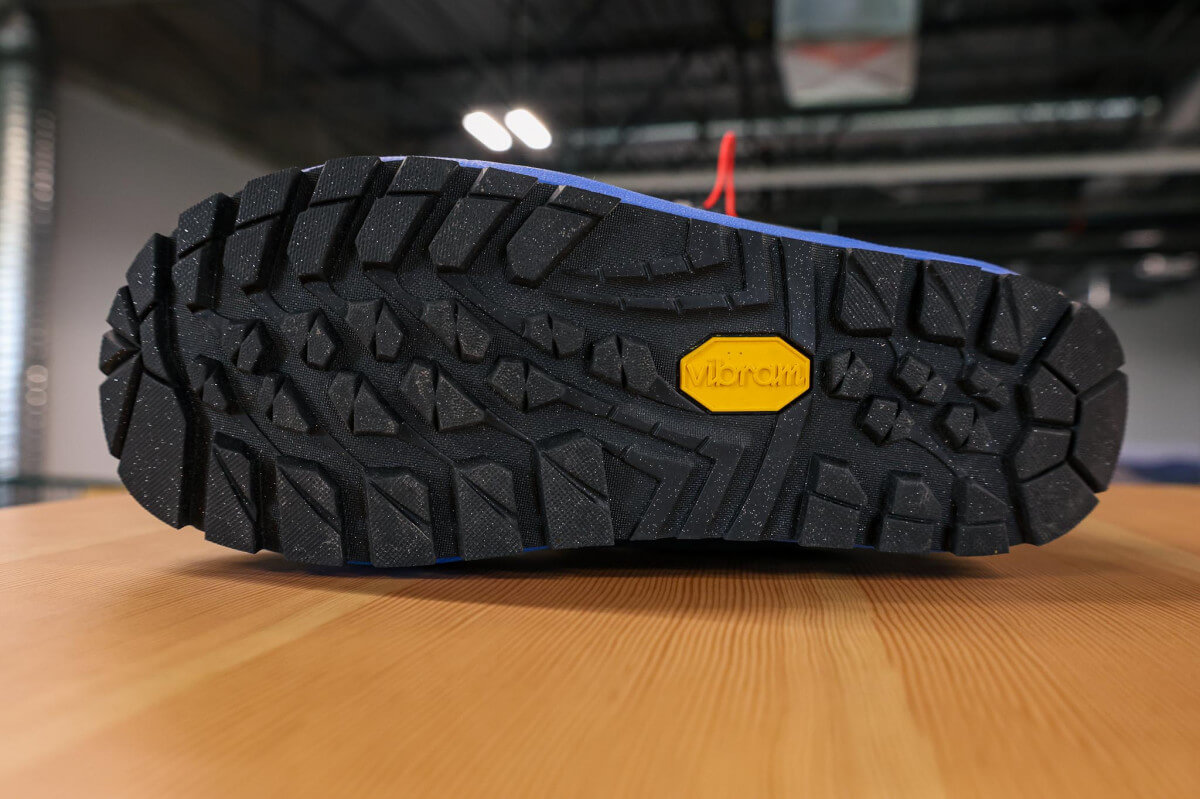
Resort bindings are designed with a variety of flex requirements, though almost always with a focus on the ‘feel’ with the board. Splitboard specific boots have a different focus when it comes to sole design, features and materials.
Firstly, all the splitboard specific boots we sell utilize heavy duty Vibram rubber soles. These are akin to those found on high end, technical mountaineering boots. These soles give maximum grip, wear protection and stiffness at all times. They are a key feature when bootpacking rocky outcrops, performing more technical ascents, and are even more grippy in icy parking lots!
Secondly, most splitboard specific boots have a ¾ or full length shank in them. A shank is a rigid or semi rigid insert in the midsole of the boot. It provides stiffness in the sole (front to back), protection from any sharp objects that could come up through the sole, and provide stability to the boot.
These shanks help prevent fatigue over a long day of splitboarding. This is most noticeable on long, steep bootpacks: the shank stops the boot sagging at the midfoot, thus minimizing arch and calf fatigue.
BOOT CRAMPON COMPATIBILITY

Regular snowboard boots are not designed to work with crampons. You can certainly use particular types of universal fit crampons on regular boots, however, without a toe and/or heel bail, these are often a sloppy fit.
Also, it bears mentioning, without a shank in the boot, crampons will not perform nearly as well as on boots designed with this use case in mind.
All splitboard specific boots have, at minimum, a heel bail for a fast fit crampon. Some, like the Northwave Domain CR Boot, have both a toe and heel bail for the ultimate in crampon fit, speed, and performance.
Now, if you're not planning on heading out on mountaineering missions that require boot crampons, then this really isn’t a feature that brings a lot of value. If you progress into that style of riding, the boot crampon compatibility becomes a very useful feature.
THERMO MOULDABLE BOOT LINERS
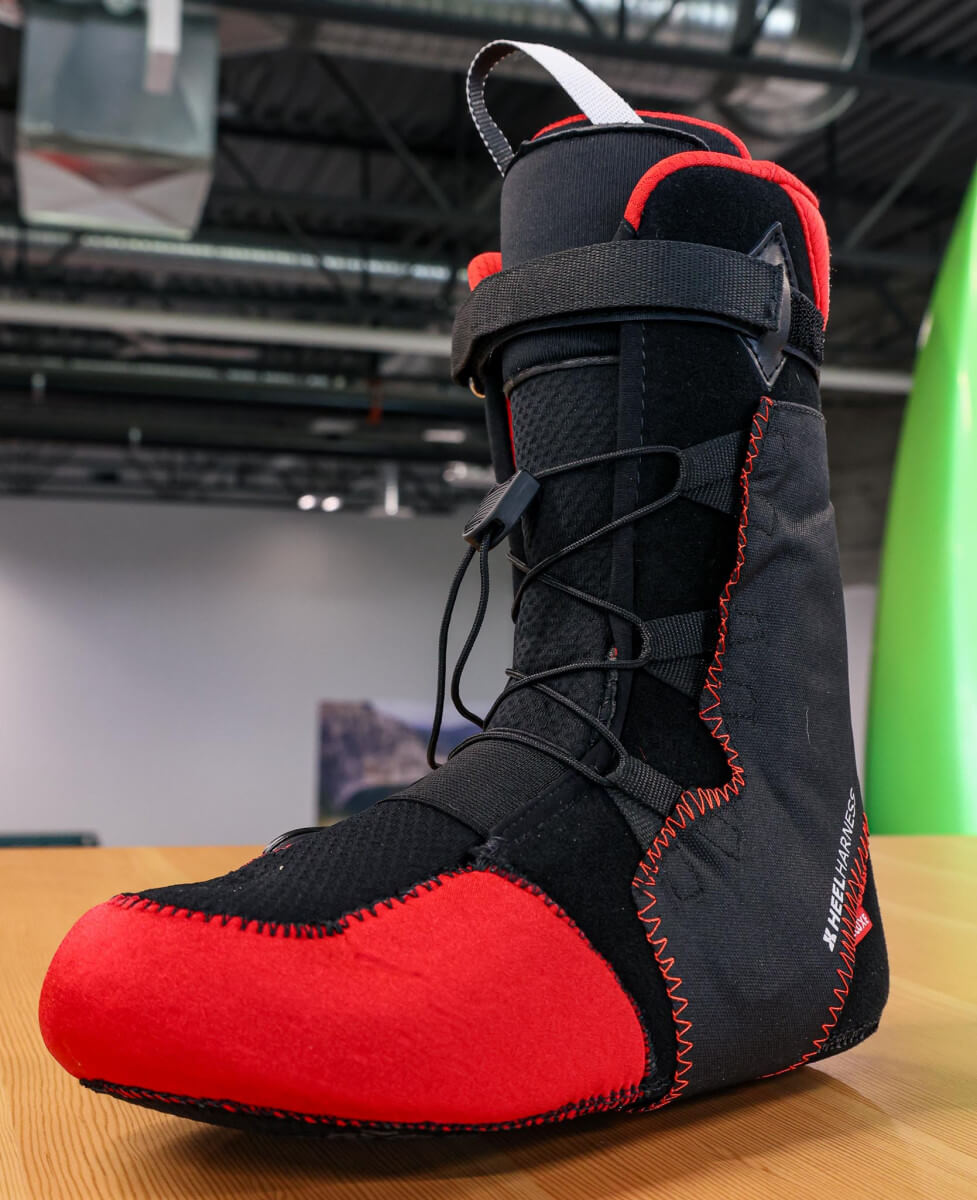
Let's face it: resort snowboard boots, out of the box, are typically warmer and more comfortable than even a moulded ski boot. So, it is not something that us snowboarders really consider when buying a resort boot.
However, in the backcountry, there are so many more repetitive movement patterns in your day within the boot, specifically when climbing. Most riders will have issues with blisters and hot spots at some point in their backcountry riding. This can be greatly minimized when utilizing the thermo mouldable liners in most splitboard specific boots.
Thermo liners in splitboard boots work the same as liners in ski boots. You can take them to a boot fitter (a service we offer); there they will measure your foot to ensure the liner is the correct size. Then, if you need more space in certain spots on your foot, the fitter will add volume using caps, spacers, padding etc. on your foot. The liner is then heated up, put back in the shell, and your socked foot goes into the liner and then you stay in them and let them cool.
This process, done correctly, gives you a liner that is a carbon copy of your foot and will give you the feel of a worn in boot, rather than a stiff, uncomfortable one prone to giving you blisters, hot spots and other troubles.
If you find you need adjustments to the liner, you can repeat this process as required.
CLIMBING MODE FOR THE UPHILL
One of the challenges for splitboarders using regular snowboard boots is the combination of boot and highback, necessitating a shorter stride when climbing. This can cause calf fatigue and affects the flow and glide of walking and climbing. Many ski touring boots have a larger range of motion which allows a longer stride and better glide.
Higher-end splitboard specific boots now offer additional space, or a full stand alone feature that creates more ‘space’ at the calf level of the boot to allow for a longer stride. Essentially, this reduces the number of steps you take in a day and also allows you to maximize glide both when skinning or in ski mode without skins.
The end result of this is less fatigue throughout the day, as effort and output is minimized. Thus leaving more energy for that second or third lap!
ADVANCED LACING SYSTEMS
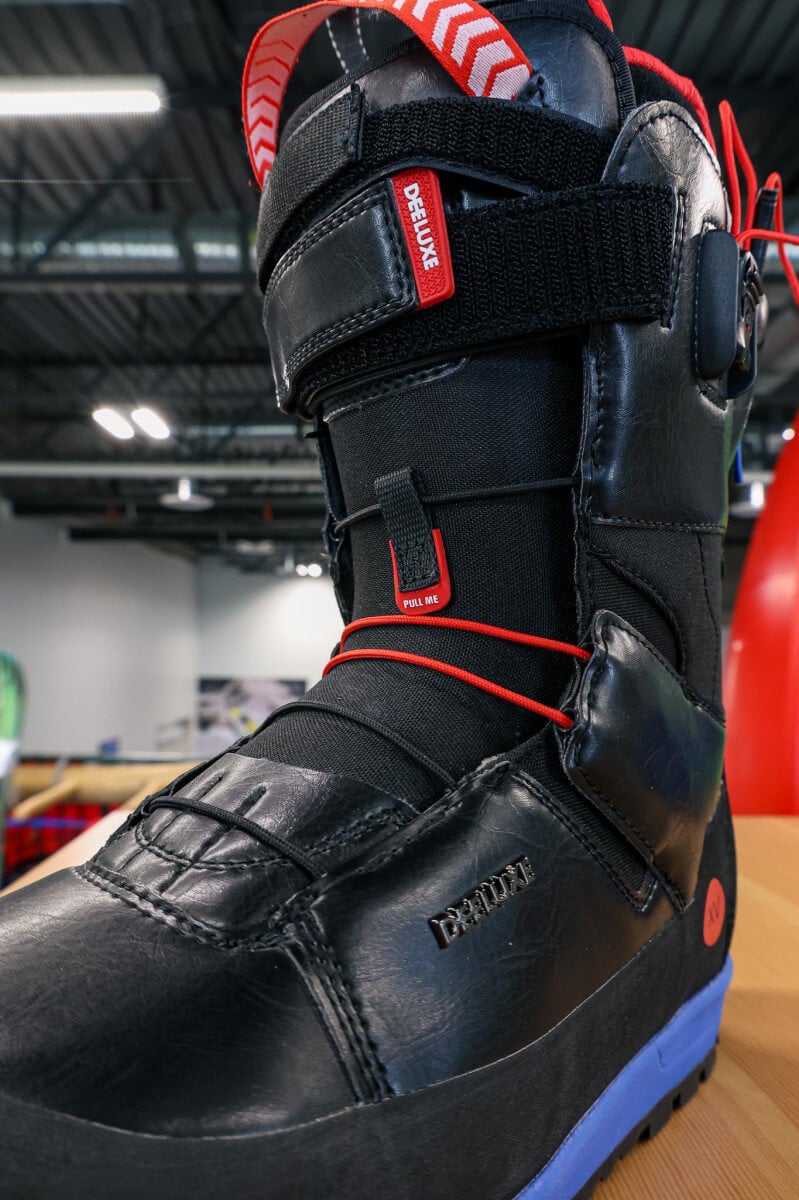
Splitboard specific boots have a much more varied need within their lacing systems. A regular resort boot just needs to be easy to tighten, and provide tightness and support through the boot. This can easily be achieved by laces or boa systems.
For splitboarding, because you are looking at both uphill walking and downhill riding, the needs are different. Due to these needs, most splitboard specific boots have multiple fastening options: the lower boot or ankle, upper boot, and power strap. Below are some scenarios and benefits to splitboard specific boot lacing systems:
Climbing in Good Snow Conditions
In this scenario you keep the lower boot tightened to prevent slippage of your foot, which can produce blisters. The upper boot is kept loose so you have maximum comfort and range of motion
Climbing in Icy Snow Conditions or Long Traverses
In this scenario, you'd keep the bottom of the boot tightened. You'd then likely tighten the upper boot to minimize energy transfer (loss) whilst edging the ‘ski.’ In very icy traverse conditions you may even fully tighten the upper boot and crank on the powerstrap to stiffen the system as much as possible.
Riding Down in Powder Snow
Depending on how you like your boot/binding combination to feel, you can set your boot up in any number of ways. For the most part, you'll keep the lower boot tight, but you may choose not to tighten the powerstrap and keep the upper boot loose for a more surfy feel.
Riding Down in Poor Snow Conditions
We don’t typically splitboard for bad snow, but it does happen. In the situation you are riding icy, avalanche debris or other poor snow conditions you can tighten both the lower and upper boot and crank the power strap for maximum control and stiffness.
The lacing systems in most splitboard specific boots utilize multiple BOA setups or similar. There are some boots that use laces. In summary, splitboard specific lacing systems provide flexibility as to where you want tightness/stiffness and where you want to be a little looser. This just provides a great deal of flexibility in your boot setup.
FIT WITH SPLITBOARD BINDINGS
In the splitboard world there are only a handful of soft boot binding manufacturers. This allows Splitboard Boot manufacturers to work with a narrow range of bindings for their boots to fit with. So, rather than the resort boot world where the boots have to be made to fit hundreds of different binding models, splitboard boots only need to fit a handful of different heel cup and strap combinations.
This, simply put, means that typically (in our experience) splitboard specific boots fit all major softboot bindings like a figurative glove.
SUMMARY OF DETAILED SPLITBOARD BOOT FEATURES
If you have made it this far, well done. You're really doing your research on Splitboard Specific Boots. We think there is a load of value in them over regular resort boots. That being said, there is no reason that you cannot ride in your resort boots.
Just beware that you will see a more rapid deterioration in your resort boots if you use them regularly for touring and, if you are riding longer days in more aggressive terrain, the benefits of splitboard boots are magnified.
If you have any further questions regarding this article or other splitboard related questions, please don’t hesitate to contact us via the methods below.
Splitboard HQ Splitboard Boot Collection
Other Splitboarding Articles
Do I Need Specific Boots for Splitboarding?
Avalanche Safety Gear for Splitboarding
AQ Outdoors Contact
Edmonton: (p) 780 463-4892 (e) info@aquabaticsedmonton.com
Calgary: (p) 403 288-9283 (e) info@aqoutdoors.com






















































